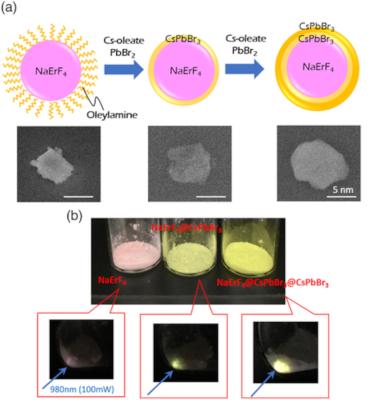Researchers from Japan's Teikyo University of Science and Toin University of Yokohama, under the JST Strategic Basic Research Program PRESTO, have developed a new near-infrared light sensor by using perovskite materials that convert weak near-infrared light to visible light.
Near-infrared light is used in a wide range of applications, such as in infrared cameras (night vision cameras), infrared communication (wireless communication), optical fiber communication, remote control, and biometric authentication. The detection of weak light in the near-infrared region and improvement of sensitivity are indispensable for the advancement in optical communication technology, medical diagnosis, environmental monitoring, and other fields. Compound semiconductors (e.g., InGaAs) having an optimal absorption band of 900–1700 nm, are used to detect light in the near-infrared region. However, these systems are expensive because of their complicated manufacturing process that involves the use of rare metals and is limited by noise interference. Moreover, such semiconductors do not exhibit visible light detection accuracy comparable to that achieved using silicon (Si) and other compounds.
The research team has developed core–shell lanthanide based-upconversion nanoparticles that can convert weak near-infrared light to visible light with high efficiency. Furthermore, by developing a near-infrared photodetector (photodiode) that combines these nanoparticles with lead halide perovskites that respond to visible light, they succeeded in converting the difficult-to-detect weak near-infrared light into electrical signals with an efficiency of 75%.
This achievement promotes the proposal of a new resource- and energy-saving near-infrared light detection method using a perovskite material that converts low-energy near-infrared light to high-energy visible light. As this technology enables weak light in the near-infrared region, whose detection and utilization are difficult even in sunlight, by converting it to visible light, it can significantly improve the near-infrared light reception sensitivity of optical sensors and the efficiency of sunlight utilization in artificial photosynthesis of solar cells, among others.


